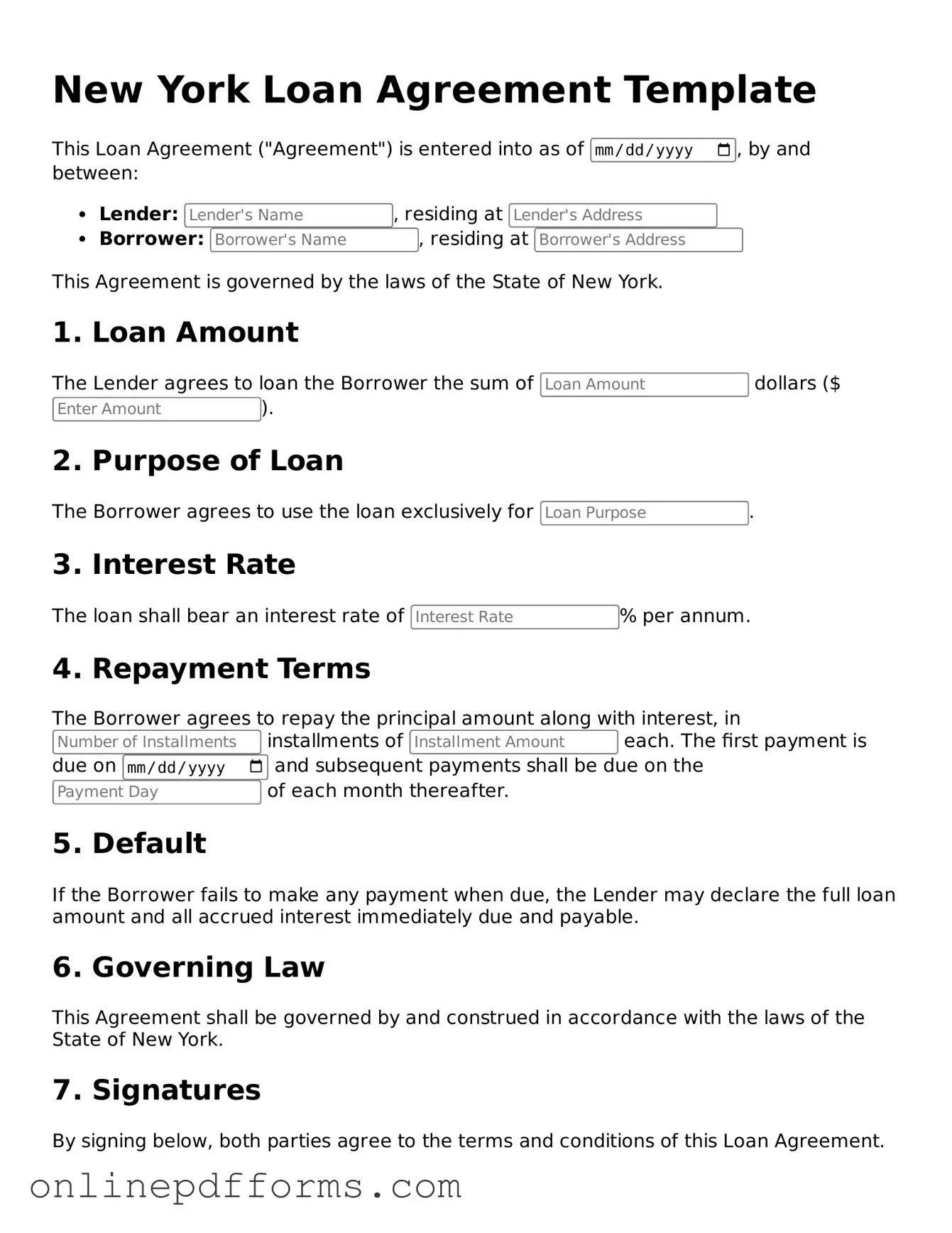The New York Loan Agreement form shares similarities with the Promissory Note. Both documents outline the terms of a loan, including the amount borrowed, interest rates, and repayment schedules. While the Loan Agreement often details the relationship between the borrower and lender, the Promissory Note focuses primarily on the borrower's promise to repay the loan. This makes the Promissory Note a simpler, more direct document that can stand alone as evidence of the debt.
Another document akin to the Loan Agreement is the Mortgage Agreement. This document secures the loan with real property as collateral. Like the Loan Agreement, the Mortgage Agreement specifies the terms of the loan, including interest rates and payment schedules. However, the Mortgage Agreement also includes details about the property being used as security, which is not typically found in a standard Loan Agreement.
The Security Agreement is another document that resembles the Loan Agreement. It is often used in conjunction with a loan to specify collateral that secures the repayment of the loan. While the Loan Agreement outlines the loan terms, the Security Agreement details the specific assets pledged as collateral. This dual documentation provides additional protection for the lender in case of default.
The Credit Agreement is similar to the Loan Agreement in that it governs the terms under which a borrower can access credit. This document often includes a broader scope of terms, such as covenants and conditions that the borrower must adhere to, which may not be present in a standard Loan Agreement. Both documents aim to protect the lender’s interests while outlining the borrower's obligations.
When acquiring a vehicle, it is essential to have the proper documentation to ensure a smooth transfer of ownership, which can be facilitated by the use of Auto Bill of Sale Forms. This form not only confirms the agreement between the seller and buyer but also protects the rights of both parties during the transaction process.
Another related document is the Line of Credit Agreement. This agreement allows borrowers to access a predetermined amount of funds as needed, rather than receiving a lump sum upfront. Like the Loan Agreement, it specifies terms such as interest rates and repayment schedules, but it also includes provisions for how and when funds can be drawn, providing flexibility for the borrower.
The Installment Sale Agreement bears resemblance to the Loan Agreement as well. This document outlines the terms under which a buyer agrees to pay for an asset over time, similar to a loan. Both documents include payment terms, but the Installment Sale Agreement typically involves the transfer of ownership of the asset once all payments are made, while the Loan Agreement does not transfer ownership until the loan is repaid.
The Lease Agreement can also be compared to the Loan Agreement. While primarily used for rental arrangements, a Lease Agreement may include terms for financing the purchase of leased equipment or property. Similar to a Loan Agreement, it specifies payment terms and conditions, but it focuses more on the use of the asset rather than ownership.
The Debt Settlement Agreement is another document that aligns with the Loan Agreement. It outlines the terms under which a borrower and lender agree to settle a debt for less than the full amount owed. While the Loan Agreement establishes the original terms of the loan, the Debt Settlement Agreement modifies those terms to reflect a new understanding, often due to financial hardship on the part of the borrower.
Lastly, the Forbearance Agreement is similar to the Loan Agreement in that it addresses the terms of temporarily suspending loan payments. This document provides a framework for how and when payments will resume and may include adjusted payment terms. While the Loan Agreement sets the original payment schedule, the Forbearance Agreement serves as an amendment to those terms during periods of financial difficulty.
